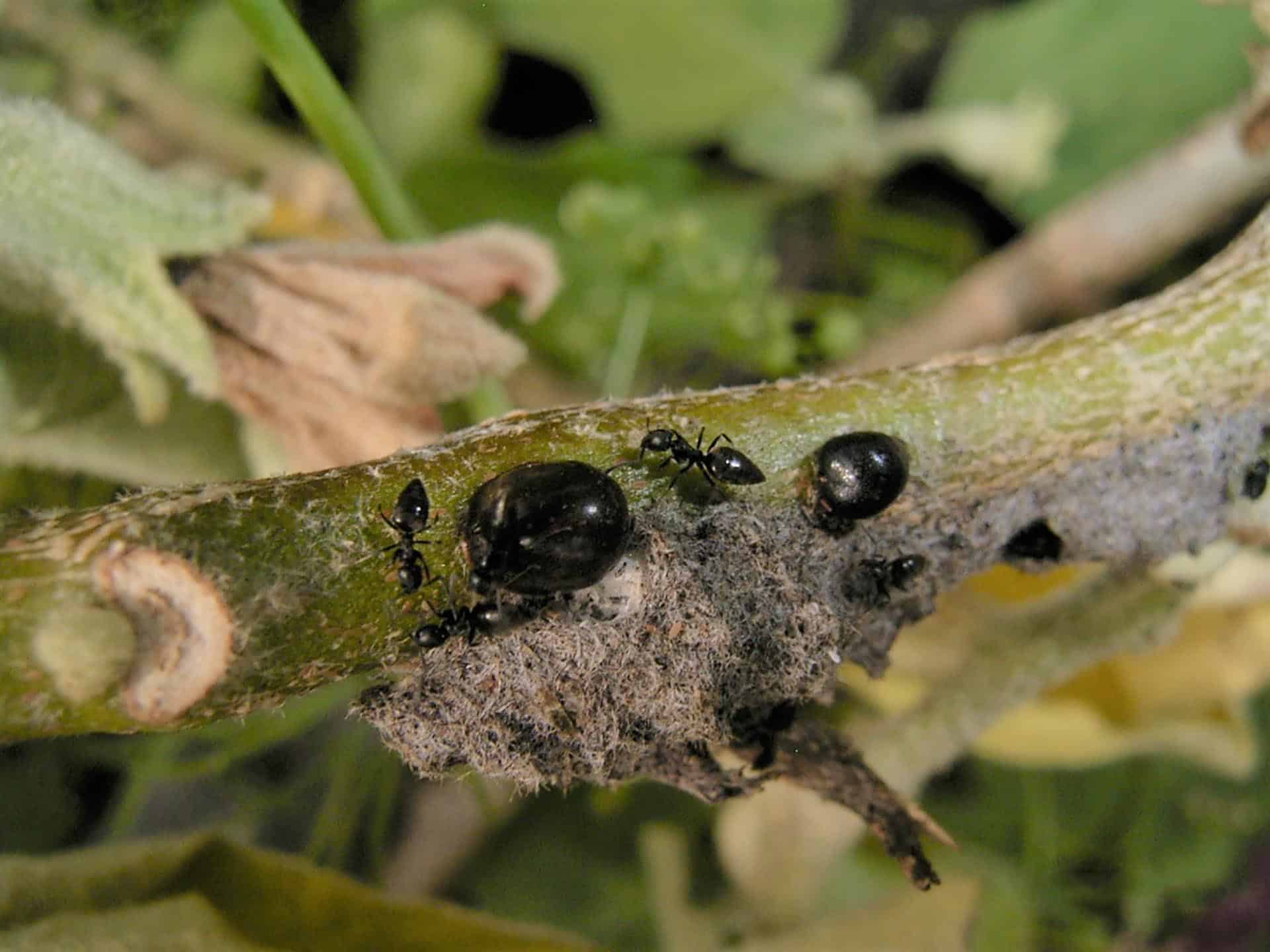Three types of scale are a major concern of food crops. These are soft scale (family Coccidae), armoured scale (family Diaspididae) and mealybugs (family Psuedococcidae).
Two other families have species which we also encounter are: Margarodidae – cottony cushion scale and Eriococcidae- felt scale
All scale have some sort of waxy, protective covering over their bodies and usually live in colonies.
Armoured refers to the hard waxy shell that this type of scale bug produce. These scale are usually smaller than soft scale. The shell can be made up of discarded moults, bits of the host plant and other materials which make it very tough. The shell is not discarded when the scale moults but added to with a larger covering allowing for the growth of the scale, forming concentric layers. The shell is not attached to their bodies; it protects the scale like a suit of armour. The armoured scale do not excrete honeydew and therefore will not have ants over the plant.
Species include:
Oleander scale (Aspidiotus nerii) – citrus, grape, macadamia, olive, oleander, orchid, persimmon
White louse scale (Unaspis citri)- mainly on citrus
Rose scale (Aulacaspis rosae)- blackberry, loganberry, raspberry, rose
Red scale (Aonidielia aurantii) –citrus, olive, passionfruit, squash
Soft-bodied scale, as their name suggests, produce a soft, thin waxy coating over their bodies which cannot be separated from them. They can be a variety of shapes and colours-flat, oval, domed, pink, black, brown, and white. These scale will produce honeydew, which in turn creates sooty mould.
Species include: magnolia scale (Neolicanium cornuparvum)
Pink wax scale (Ceroplastes rubens)- coffee, avocado, banana, citrus, mango, custard, apple
Black scale (Saissetia oleae)- apple, apricot, citrus, fig, olive, passionfruit, pear plum quince
(Parasaissetia nigra)- avocado, citrus, fig, guava, ginger, hibiscus, mango
White scale (Ceroplastes destructor)- avocado, citrus, coffee, guava, hibiscus, persimmon, stone fruit, rosemary
The adult females, with the exception of the mealy bug, are virtually always immobile, living their entire lives attached to the host plant under their protective covers. In most species the males, which look like small wasps, will have wings, but do not feed or live for very long.
The young, called crawlers, can move about in search of a place to feed and build their protective coverings when mature. They can also be dispersed by the wind.
Mealybugs are a type of scale but females keep their legs and are able to move around.
Adult size: 1-5 mm

